The McLaren MP4-18 was an utterly disastrous Formula 1 car. It never even got to race in a Grand Prix because it was so bad. During testing, it caught fire pretty much every time it went out on track. The test team had to meet it in the pit lane with extinguishers and douse the bodywork with cold flannels to cool it down, because if it hadn’t caught fire yet, it was about to. It also suffered a series of unexplained but serious crashes. It was the worst car McLaren ever produced, so you might wonder why I’ve chosen it as my one that got away, but as someone with a technical background, that car really floated my boat because it was so innovative. I wish we’d been able to persevere with it, because we never got to understand its full potential.
In 2002, McLaren were in a tight battle against Ferrari. They’d been winning consistently for a few years and Adrian Newey, McLaren’s design chief at the time, had to come up with a car that was really extreme to go up against them in the 2003 season. That car was the MP4-18.

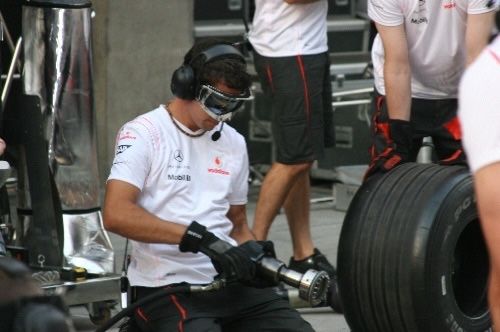
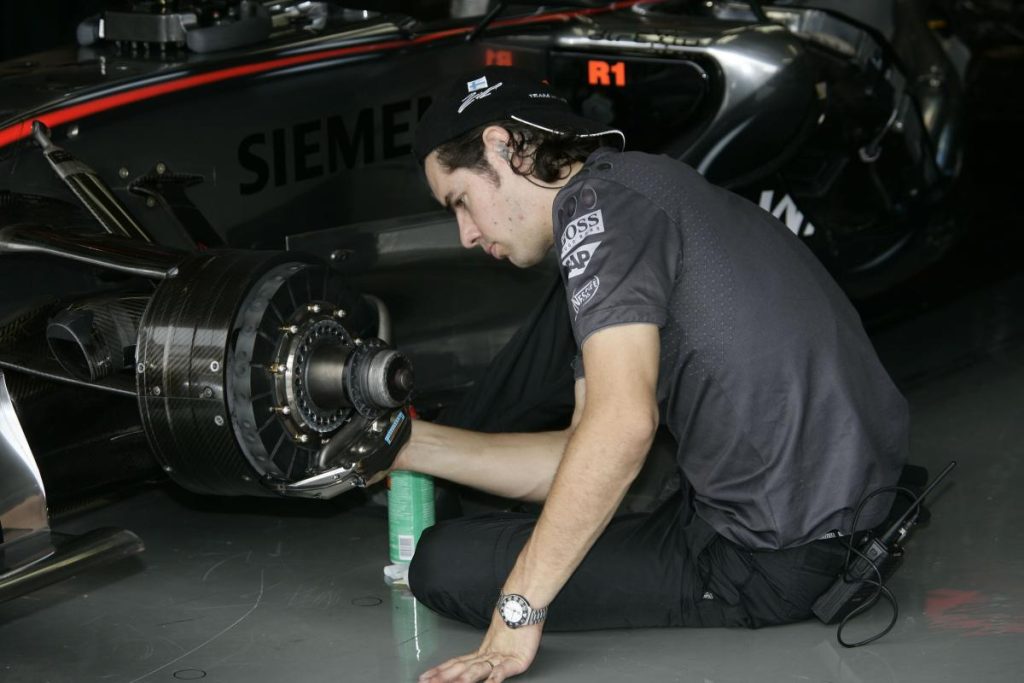
To the trained eye, it looked totally different to other Formula 1 cars of the day; Adrian’s aerodynamic concepts were completely revolutionary. The front wing protruded ahead of the nose cone, which allowed us to affect the air flow over the car in a way that no one else was doing. The chassis was very narrow, which was great aerodynamically, but it meant everything inside had to be tightly packaged; that’s part of the reason why it overheated. The exhausts that exited underneath the car into a diffuser to create extra downforce every time the driver put their foot on the throttle didn’t help either; the thinking behind it was genius, but it didn’t work because the floor would get too hot and catch fire. In addition to that, the carbon fibre gearbox massively saved weight but we couldn’t get the material science to work, and it got so hot it began to delaminate. The engineering principles behind all of these innovations were solid, but when you’re pushing boundaries you’re going to come up against problems.
There had been so much excitement around the MP4-18 – until the point it went out on a track for testing. Back then, it wasn’t unheard of to introduce a new car mid-season, so at first, no one was panicked that its arrival kept being delayed because things were going wrong. But working on a car that is going to fail, despite your best efforts, isn’t a great feeling.
I was in my early twenties at the time and worked as a race team mechanic on Kimi Räikkönen’s car – the MP4-17. I’d landed my dream job with a team that was at the front end of the grid fighting for wins so I felt a huge sense of responsibility. You have to make sure everything is right every time a car goes out; it weighs on your mind. When Kimi drove the MP4-18, he crashed. Seeing something like that happen is horrifying until you get word back that the driver is OK. The car was already a PR disaster and when a statement was put out that suggested the crash was driver error, which it definitely hadn’t been, Kimi did not take well to the suggestion that it was his fault. He used to swear a lot on the radio but I remember hearing the expletives across the airwaves as he made his way back to the garage, I almost had to take my headset off because it was so loud. He said ‘I am never ever driving that car again,’ and he never did. I think three or four MP4-18s were produced, and at least one of them got 100 percent destroyed in a crash involving Alexander Wurz. It was a difficult time and a difficult car that strained a lot of relationships.
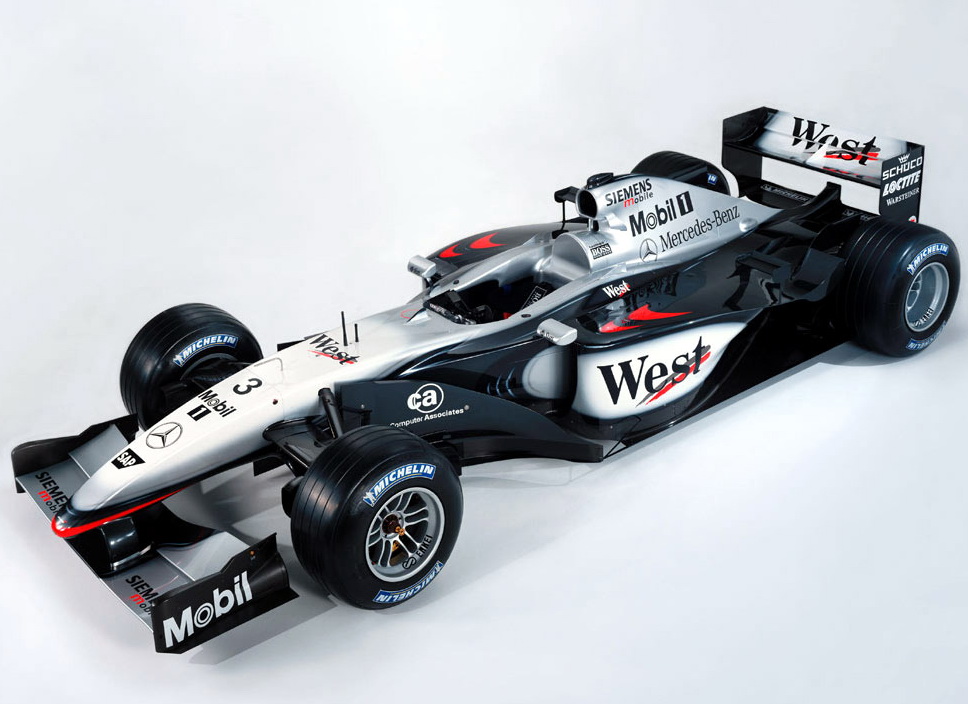
The world had been waiting for the MP4-18 as much as we had, but eventually McLaren took the tough decision to say it’s not good enough, we’re going to shelve it. You can’t keep developing something forever, because money runs out and you’ve got to keep the car that is racing up to speed.
Everyone had been so sure the MP4-18 was going to be the key to overturning Ferrari’s dominance, so there was a real plummet in morale, but on the front line with Kimi in the MP4-17 things were still going really well. By the 2003 season, we knew the car inside out because we’d been developing it for a year and a half; it was proven, it worked and it was within the top 3 at every meeting.
Kimi won his first race with the MP4-17 at the Malaysian GP. It was my first race win as well, and the celebrations went on for three days. Kimi was a bit of a party animal, but we all desperately wanted to be under that podium on a Sunday afternoon with the champagne being sprayed over all of us. That job wasn’t a nine to five, it was a lifestyle and a commitment; we wanted to win and were willing to do whatever it took to get us there. Back then there wasn’t such a thing as health and safety. Everyone was willing to keep going, whether that was in the garage or out partying. It was fun but it was hard work. The mood could easily swing between extremes so camaraderie and trust were important. No one wanted to let their teammates down.
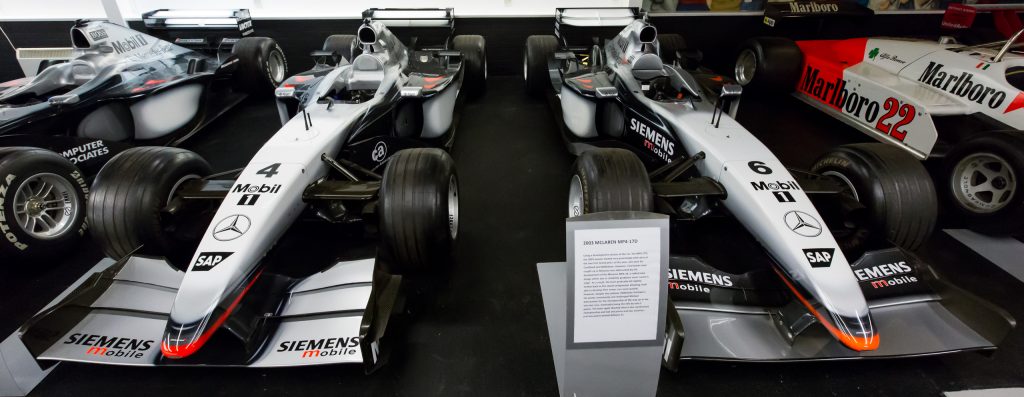
When we weren’t out racing, we’d be flat out at the McLaren facility. Only certain people had access to the R&D [research and development] area, which I called Q Branch, and whenever I had a spare moment I would go and see what secret crazy inventions were in the pipeline; it was always fascinating. I would help them out, if I could, with the knowledge I had obtained working on the cars day in, day out. Amazing things went on there. For example, at the time, we didn’t have DRS [drag reduction system] on the rear wing to reduce drag and get a higher top speed on a straight, so the guys in R&D invented a thing called the F-duct to manipulate the air flow over the car. It was very simple. When the driver got onto the straight he would cover a little opening in the cockpit with his hand or elbow to change the air flow going through a hidden pipe that had been built into the chassis and exited ahead of the rear wing. By doing that, you could stall the rear wing, i.e. lose the downforce which you don’t need so you can get a better top speed. No one could figure out what it was that was giving us that edge.
McLaren went on to create the MP4-19, which also wasn’t great, but the MP4-19B immediately won a race. At that point, Adrian went to Red Bull and took many of the concepts he pioneered on the MP4-18 with him. It was a bit of a shame, as I would have loved to have seen us develop them, rather than for it happen a few years later at another team, but the fact that Adrian made them successful probably only happened because he started the process at McLaren, so I think of us being as being really groundbreaking in that sense. I’m proud of what we did.
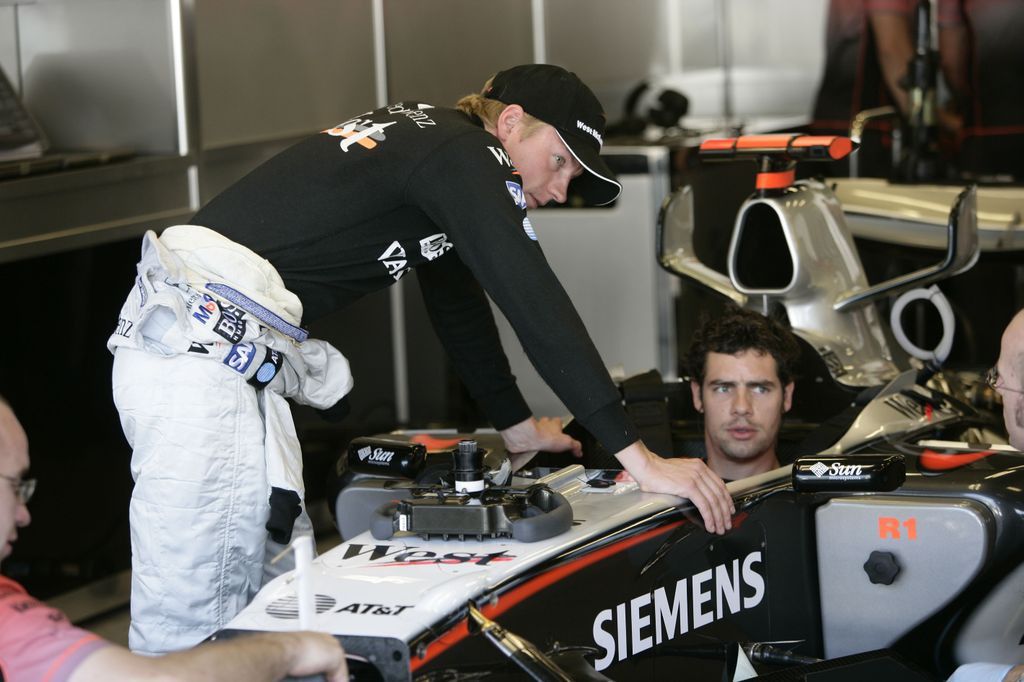
I got to sit in the MP4-18 when it was up on stands in the garage to test the engine and gearbox, but I only got to drive it in the McLaren simulator, which was staggering. Everything is set up to give the most realistic experience, for example the chassis moves around on hydraulic rigs so you get the motion of acceleration and braking, and your crash helmet is hooked to hydraulics so you can experience g-force, which can feel pretty violent. I did six laps around the Malaysian GP track and my neck and my arms were destroyed for days. It was a real eye-opener into what drivers go through.
The MP4-18 was integral to the Formula 1 timeline, and I think it deserves its place in history; it never got the credit it deserved because we never saw the success that it could have had. I think a lot of people would like to have seen it crushed, but at least one version of every car McLaren has ever produced – going right back to Bruce McLaren’s first car – is preserved in the museum at their facility in Woking. So it still exists but I don’t think it’ll ever turn a wheel again.









